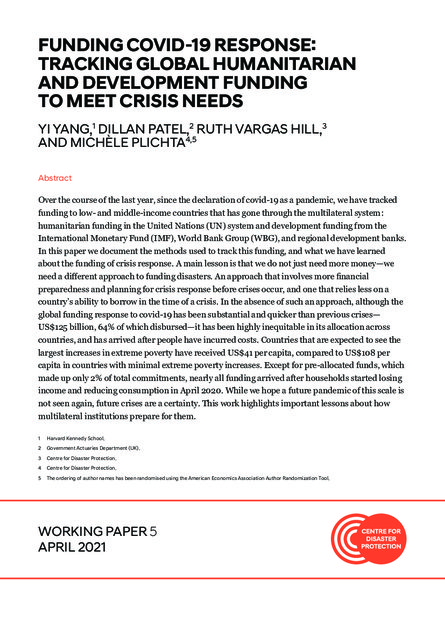
Over the course of the last year, since the declaration of covid-19 as a pandemic, we have tracked funding to low- and middle-income countries that has gone through the multilateral system: humanitarian funding in the United Nations (UN) system and development funding from the International Monetary Fund (IMF), World Bank Group (WBG), and regional development banks. In this paper we document the methods used to track this funding, and what we have learned about the funding of crisis response. A main lesson is that we do not just need more money—we need a different approach to funding disasters. An approach that involves more financial preparedness and planning for crisis response before crises occur, and one that relies less on a country’s ability to borrow in the time of a crisis. In the absence of such an approach, although the global funding response to covid-19 has been substantial and quicker than previous crises— US$125 billion, 64% of which disbursed—it has been highly inequitable in its allocation across countries, and has arrived after people have incurred costs. Countries that are expected to see the largest increases in extreme poverty have received US$41 per capita, compared to US$108 per capita in countries with minimal extreme poverty increases. Except for pre-allocated funds, which made up only 2% of total commitments, nearly all funding arrived after households started losing income and reducing consumption in April 2020. While we hope a future pandemic of this scale is not seen again, future crises are a certainty. This work highlights important lessons about how multilateral institutions prepare for them.